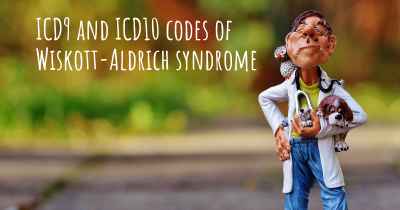How is Wiskott-Aldrich syndrome diagnosed?
See how Wiskott-Aldrich syndrome is diagnosed. Which specialists are essential to meet, what tests are needed and other useful information for the diagnosis of Wiskott-Aldrich syndrome

Wiskott-Aldrich syndrome (WAS) is a rare X-linked genetic disorder that primarily affects the immune system and blood clotting. It is characterized by a triad of symptoms including eczema, low platelet count (thrombocytopenia), and recurrent infections. Diagnosing Wiskott-Aldrich syndrome involves a combination of clinical evaluation, laboratory tests, and genetic analysis.
Clinical Evaluation:
The first step in diagnosing Wiskott-Aldrich syndrome is a thorough clinical evaluation by a healthcare professional. They will review the patient's medical history, assess their symptoms, and perform a physical examination. The presence of eczema, bleeding tendencies, frequent infections, and a family history of the disorder may raise suspicion for Wiskott-Aldrich syndrome.
Laboratory Tests:
Several laboratory tests are used to support the diagnosis of Wiskott-Aldrich syndrome:
Complete Blood Count (CBC):
A CBC is a routine blood test that provides information about the different types of blood cells. In individuals with Wiskott-Aldrich syndrome, the CBC typically shows a low platelet count (thrombocytopenia) and small platelet size (microplatelets). Additionally, there may be abnormalities in other blood cell counts.
Immunoglobulin Levels:
Measurement of immunoglobulin levels, particularly immunoglobulin M (IgM), immunoglobulin A (IgA), and immunoglobulin E (IgE), can help in the diagnosis of Wiskott-Aldrich syndrome. These levels are often decreased in affected individuals.
Platelet Function Tests:
Platelet function tests assess how well the platelets are functioning. Individuals with Wiskott-Aldrich syndrome may have impaired platelet function, leading to difficulties in blood clotting.
Flow Cytometry:
Flow cytometry is a technique used to analyze the characteristics of cells. In the case of Wiskott-Aldrich syndrome, flow cytometry can help evaluate the expression of the Wiskott-Aldrich syndrome protein (WASP) on immune cells. Reduced or absent expression of WASP is a key feature of the disorder.
Genetic Analysis:
Genetic analysis is crucial for confirming the diagnosis of Wiskott-Aldrich syndrome. It involves identifying mutations in the gene responsible for the disorder, known as the WAS gene. Genetic testing can be performed using various methods:
Sanger Sequencing:
Sanger sequencing is a traditional method used to sequence specific regions of DNA. It can be employed to identify mutations in the WAS gene. This technique is particularly useful when a known mutation is suspected.
Next-Generation Sequencing (NGS):
NGS is a more advanced and comprehensive genetic testing method. It allows for the simultaneous sequencing of multiple genes, including the WAS gene. NGS can identify both known and novel mutations, providing a more comprehensive analysis.
Carrier Testing:
Carrier testing can be performed on family members of an individual with Wiskott-Aldrich syndrome. It helps determine if they carry a mutation in the WAS gene, even if they do not exhibit symptoms of the disorder.
Conclusion:
Diagnosing Wiskott-Aldrich syndrome involves a combination of clinical evaluation, laboratory tests, and genetic analysis. Clinical evaluation helps identify the characteristic symptoms of the disorder, while laboratory tests such as CBC, immunoglobulin levels, platelet function tests, and flow cytometry provide supportive evidence. Genetic analysis, including Sanger sequencing and NGS, is essential for confirming the diagnosis by identifying mutations in the WAS gene. Early diagnosis is crucial for appropriate management and treatment of Wiskott-Aldrich syndrome.
Posted Mar 3, 2019 by John 2500








